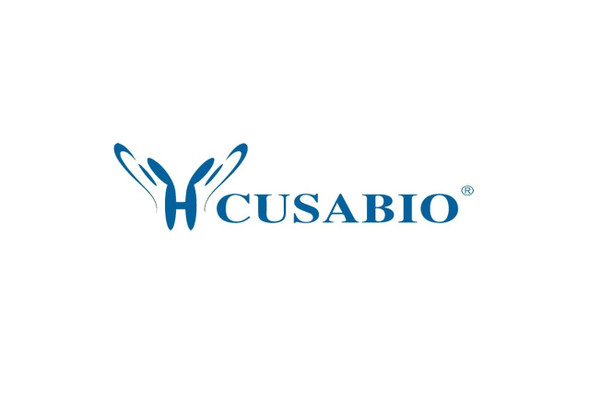Cusabio Human Recombinants
Recombinant Human Retinoschisin (RS1) | CSB-EP020534HU
- SKU:
- CSB-EP020534HU
- Availability:
- 3 - 7 Working Days
Description
Recombinant Human Retinoschisin (RS1) | CSB-EP020534HU | Cusabio
Alternative Name(s): X-linked juvenile retinoschisis protein
Gene Names: RS1
Research Areas: Cell Adhesion
Organism: Homo sapiens (Human)
AA Sequence: STEDEGEDPWYQKACKCDCQGGPNALWSAGATSLDCIPECPYHKPLGFESGEVTPDQITCSNPEQYVGWYSSWTANKARLNSQGFGCAWLSKFQDSSQWLQIDLKEIKVISGILTQGRCDIDEWMTKYSVQYRTDERLNWIYYKDQTGNNRVFYGNSDRTSTVQNLLRPPIISRFIRLIPLGWHVRIAIRMELLECVSKCA
Source: E.coli
Tag Info: N-terminal 6xHis-tagged
Expression Region: 24-224aa
Sequence Info: Full Length of Mature Protein
MW: 27 kDa
Purity: Greater than 90% as determined by SDS-PAGE.
Relevance: May be active in cell adhesion processes during retinal development.
Reference: Clinical and genetic findings in Hungarian patients with X-linked juvenile retinoschisis.Lesch B., Szabo V., Kanya M., Somfai G.M., Vamos R., Varsanyi B., Pamer Z., Knezy K., Salacz G., Janaky M., Ferencz M., Hargitai J., Papp A., Farkas A.Mol. Vis. 14:2321-2332(2008)
Storage: The shelf life is related to many factors, storage state, buffer ingredients, storage temperature and the stability of the protein itself. Generally, the shelf life of liquid form is 6 months at -20?/-80?. The shelf life of lyophilized form is 12 months at -20?/-80?.
Notes: Repeated freezing and thawing is not recommended. Store working aliquots at 4? for up to one week.
Function: Binds negatively charged membrane lipids, such as phosphatidylserine and phosphoinositides (By similarity). May play a role in cell-cell adhesion processes in the retina, via homomeric interaction between octamers present on the surface of two neighboring cells
Involvement in disease: Retinoschisis juvenile X-linked 1 (XLRS1)
Subcellular Location: Secreted, Cell membrane, Peripheral membrane protein, Extracellular side
Protein Families:
Tissue Specificity: Restricted to the retina (at protein level) (PubMed:10915776). Detected in the inner segment of the photoreceptors, the inner nuclear layer, the inner plexiform layer and the ganglion cell layer (at protein level). At the macula, expressed in both the outer and inner nuclear layers and in the inner plexiform layer (at protein level) (PubMed:10915776). Detected in retina (PubMed:9326935). Detected only within the photoreceptor cell layer, most prominently within the inner segments of the photoreceptors (PubMed:10915776). Undetectable in the inner plexiform layers and the inner nuclear layer (PubMed:10915776).
Paythway:
Form: Liquid or Lyophilized powder
Buffer: If the delivery form is liquid, the default storage buffer is Tris/PBS-based buffer, 5%-50% glycerol. If the delivery form is lyophilized powder, the buffer before lyophilization is Tris/PBS-based buffer, 6% Trehalose, pH 8.0.
Reconstitution: We recommend that this vial be briefly centrifuged prior to opening to bring the contents to the bottom. Please reconstitute protein in deionized sterile water to a concentration of 0.1-1.0 mg/mL.We recommend to add 5-50% of glycerol (final concentration) and aliquot for long-term storage at -20?/-80?. Our default final concentration of glycerol is 50%. Customers could use it as reference.
Uniprot ID: O15537
HGNC Database Link: HGNC
UniGene Database Link: UniGene
KEGG Database Link: KEGG
STRING Database Link: STRING
OMIM Database Link: OMIM










